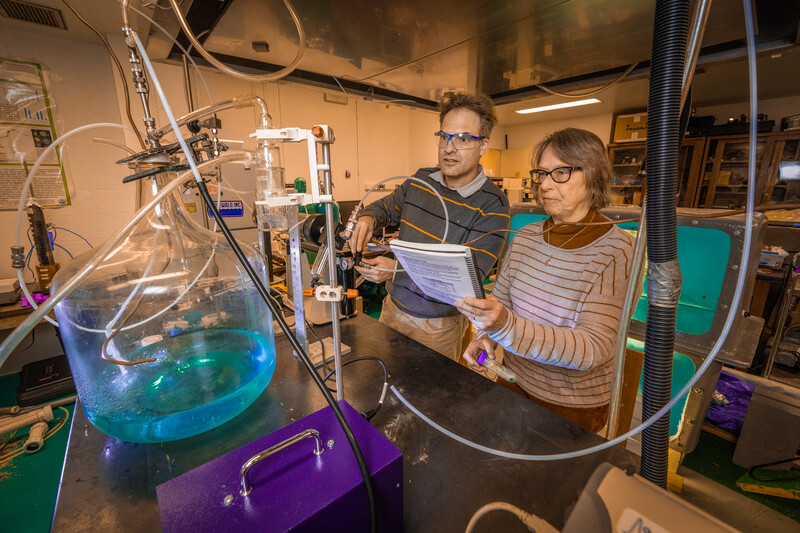Researchers Characterize Sea Spray Particles That Form Ice Crystals in High-Altitude Clouds
Published: 17 January 2023
NSF- and ASR-funded research allows for particle and freezing analyses that enhance the understanding of cloud formation and effects on climate
The following is based on a story by Stony Brook University.

While there are several sources of ice-forming particles in the atmosphere, sea spray aerosols (SSAs) are recognized as a significant source of ice-nucleating particles (INPs). But what SSAs are composed of, how they affect cloud formation, and how they may affect climate remains an important question for atmospheric scientists.
Now researchers at Stony Brook University have developed a way to simulate SSAs in laboratory tanks that mirror ocean conditions. This has allowed them to determine the organic compounds associated with and released by growing marine microorganisms and discover clues to the role of these compounds as INPs.
The team also studied ice formation, a complex process driven by various mechanisms. These new results, in combination with previous studies, allowed for the development of a holistic SSA-INP freezing parameterization for implementation in cloud-resolving and climate models. Their findings are detailed in a paper published in Science Advances.
The work—led by Stony Brook atmospheric chemists Peter Alpert (now at Paul Scherrer Institute Switzerland), atmospheric scientist Daniel Knopf, and microbial oceanographer Josephine Aller—was supported by the U.S. Department of Energy’s (DOE) Atmospheric System Research (ASR) program through an ASR project and a previous National Science Foundation (NSF) grant to Aller that allowed them to initiate this research.
This study’s freezing parameterization development, crucial to improving atmospheric models, drew upon data collected by DOE’s Atmospheric Radiation Measurement (ARM) user facility. ARM field campaigns and related papers that were useful to this study included:
- the Indirect and Semi-Direct Aerosol Campaign (ISDAC), a 2008 intensive cloud and observing campaign deployed at ARM’s North Slope of Alaska atmospheric observatory. The Stony Brook team used ISDAC data for model verification.
- the Carbonaceous Aerosol and Radiative Effects Study (CARES) around Sacramento, California (Knopf et al. 2014).
- the Marine ARM GPCI Investigation of Clouds (MAGIC) in the eastern north Pacific Ocean between Hawaii and California (DeMott et al. 2015).
- the Aerosol and Cloud Experiments in the Eastern North Atlantic (ACE-ENA) campaign in the Azores (Knopf et al. 2022).
Aerosols generated by bubbles and winds blowing over the ocean surface form sprays of fine salt particles coated with organic compounds that can be transported high up into the atmosphere, where clouds form. They are among various other particle types, including dust, soot, and ash from wildfires, that contribute to ice formation in the atmosphere.
Oceans cover 70 percent of the planet, with areas away from the continents where SSAs are the significant contributors to INPs and cloud formation. For scientists to predict the formation of clouds and to assess their climatic impact, they first need to understand under which conditions ice crystals can form from particles originating from the ocean, which is the largest source of INPs.
The Stony Brook research team simulated ocean water and generated ice-forming SSA particles. They examined these and found that the SSA particles were made up of the metabolic products of microorganisms living near the ocean surface.
Read the full story at stonybrook.edu.
Keep up with the Atmospheric Observer
Updates on ARM news, events, and opportunities delivered to your inbox
ARM User Profile
ARM welcomes users from all institutions and nations. A free ARM user account is needed to access ARM data.


















